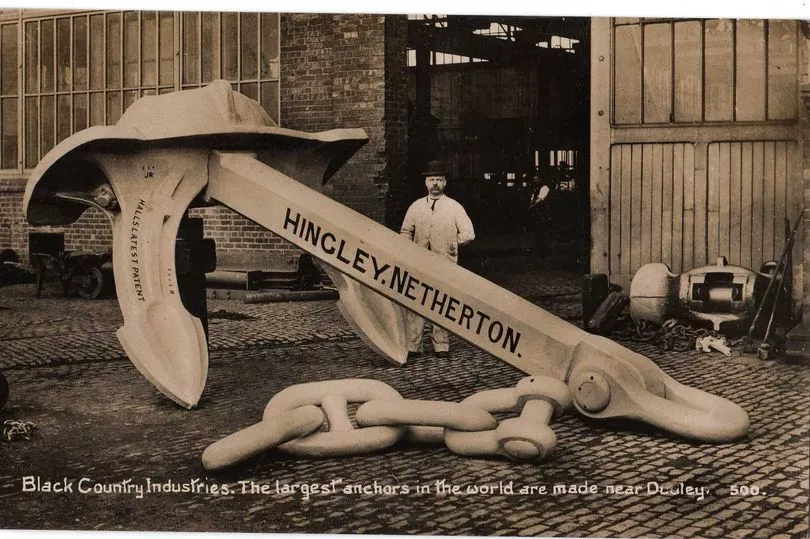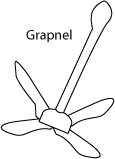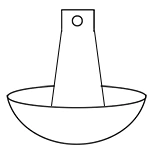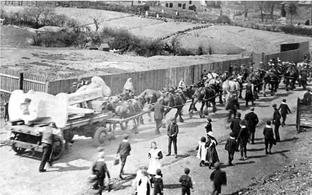
There are several types of anchors available, but it is important to note that not all anchors are appropriate for a ship. Some anchors are designed for bigger ships whilst others are designed for smaller boats. With that said, the main types of anchors are divided into two: Temporary Anchors and Permanent Anchors.
Temporary Anchors
Temporary Anchors are intended to be used for a short period. These are generally used by merchant ships to stop them in a specific position or to berth and moor the vessel. These types of anchors rely on hooking into the seabed by using a combination of weight and gravity to drive and set (bury) the flukes into the bottom. The main types of temporary anchors used by ships and boats include:
- Danforth Anchor.
- Kedge or Navy Anchor.
- Grapnel Anchor.
- Plow Anchor.
- Claw Anchor.
- Stockless Anchor.
Permanent Anchors
Permanent Anchors are anchors which are used to maintain something in place for a long period. They are designed to hold in all kinds of weather conditions, including the worst storms, and are usually used to anchor Lightships, Navigational Buoys and Moorings. The main types of permanent anchors include, but are not limited to:
- Mushroom Anchor.
- Deadweight Anchor.
We will now go further in-depth within the different anchors.
Boat Anchor Names: Trademarked Names and Generic Names
Trademarked Name Generic Name
Bruce Claw
CQR Plow/Hinged Plow
Danforth Fluke
Delta Wing

Temporary Anchors
Lightweight or Danforth Anchor
The Danforth anchor is a lightweight type of anchor. It consists of two long pivoting flukes which are designed to reduce jamming with mud and grass. With a range from 1.5 kilograms to nearly 90 kilograms, these anchors are generally made of cast galvanized metal or a lightweight aluminium composite. When dropped, the flukes of the anchor dig into the bottom burying the anchor.
This type of anchor is relatively lightweight compared to the holding power it provides and therefore it is commonly used onboard small recreational boats.
Danforth anchors are best in hard sand or mud, where flukes can easily dig into the bottom. In grassy seabeds, the flukes tend to slip off whilst in a rocky seabed they cannot hold.
Kedge or Navy Anchor
The kedge or navy anchor is a more traditional style anchor with arks, flukes and a stock. It is best used in the rocky seabed, heavy grass bottoms, weed bottoms or hard sand. In the mud and loose sand, these anchors do not tend to work due to the flukes not being able to dig into the seabed.
Unlike the Danforth anchor, this anchor is not a burying anchor, instead, one arm digs into the seabed and one lies exposed. With that said, this is generally used by very large ships, since it relies on the weight for most of the holding power and therefore, it is not suitable for recreational use.
Grapnel Anchor
This type of anchor is very inexpensive and very popular with small boats such as kayaks, canoes and dinghies. The holding power comes from hooking onto an object such as a rock or coral, and with that said, when used in soft bottoms such as sand, soil or mud it does not have too much holding power. Most grapnel anchor models are made of galvanized steel.

Plow or “CQR/DELTA” Anchor
The Plow anchor also known as the “CQR/DELTA” anchor is a top choice with boats due to its good holding power in a wide variety of bottom types such as sand, pebbles, rocks, grass, kelp and coral. It consists of either a fixed shank or a pivoting shank. These are generally made of galvanized metal or stainless steel.
When dropped in the water, the Plow anchor lands on its side, when pulled by the boat’s astern propulsion, it buries itself. The main disadvantage of this type of anchor is that it does not work well in mud, soil or any other loose materials. The anchor is simply dragged along the seabed when the ship moves without any resistance until it catches on to a rock or obstruction at the bottom.


Claw or “BRUCE” Anchor
The Claw anchor is constructed of high-grade steel and is suitable for use on various seabeds. This anchor sets effortlessly and stows easily on the bow of most boats.
Best used in rocky seabeds, this anchor hooks into the rocks at the bottom. Unfortunately, it is not as good with sand, silt or mud.

Stockless Anchor
The Stockless Bower Anchor is the most common found onboard merchant vessels nowadays. It consists of a Shank, Crown, Flukes and Shoulders. The Flukes pivot on the same plane perpendicular to the shank, and the weight of the shank together with that of the anchor chain, keep the anchor lying flat on the seabed.
With that said, the stockless anchor is a simple design with no unnecessary parts. This makes it extremely easy to handle and store. Additionally, its simple design makes breaking it from the bottom a relatively easy procedure.
The fact that the shank can pivot while the flukes are embedded in the seafloor minimizes wear and tear and ensures that the anchor still holds even when a change in current or wind occurs which causes the ship to pull on the anchor from different angles.
In terms of disadvantages, the stockless anchor is known to not be so effective in soft bottoms such as soil and sand.
Permanent Anchors
Mushroom Anchor
Mushroom Anchors get their name from their rounded, mushroom shape. They are bowl-shaped with a shank welded in the centre. These types of anchors are permanent, can weigh several thousand pounds and are used chiefly for moorings.
This anchor is capable of grasping the ground no matter how it falls, and the shape works best in soft bottoms where it creates a suction that can be difficult to break. One of the benefits of a mushroom anchor is that it usually continues to sink into the sand until it has moved the same mass as itself. This means that it can displace a very large amount of material and therefore provide a huge level of holding power for the ship or object using it.

Deadweight Anchor
The Deadweight anchors are the simplest and cheapest method of restraining down floating structures to a single place. This anchor employs the weight of a dense structure such as solid metal or concrete block to provide a downward force.
The only disadvantage with such an anchor is the fact that it requires to be relatively large to be able to successfully hold down oil rigs, large semi-submersibles and other offshore installations, and therefore, it can be difficult to transport and store the anchor structure and to lower it to the seabed.
The Deadweight anchor is better than the mushroom anchor for the simple reason that it can operate in all sorts of environments without the need for any suction or adhesion.

The original 1911 journey of the Titanic anchor which needed 20 shire horses to move the 15 and three quarter ton anchor.





